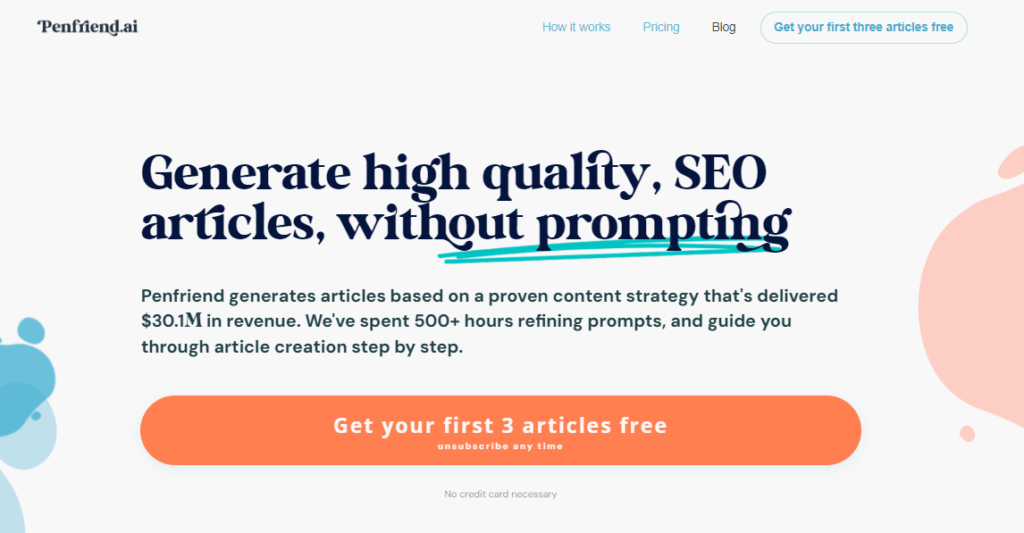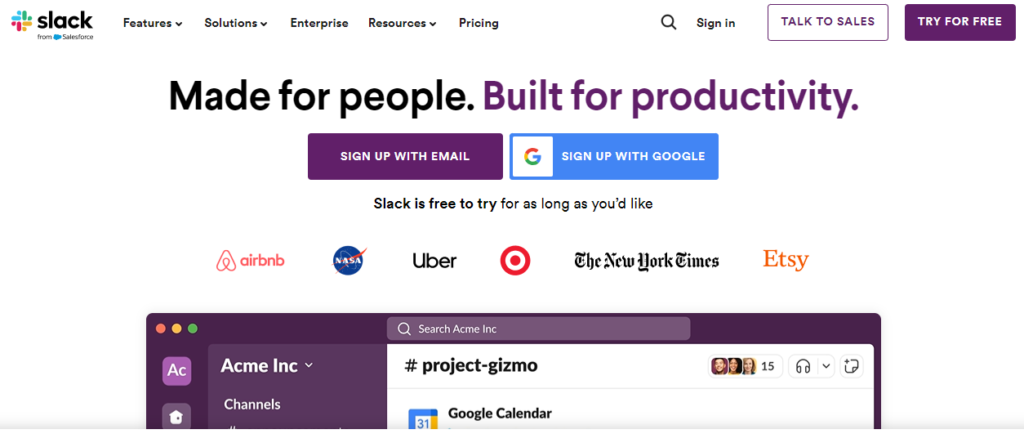Picture your favorite dish-bursting with flavor, wowing your senses every time. Now imagine that perfect concoction missing a key ingredient. Falls a little flat, right? The same can be said of your startup if it’s missing the essential component of product-market fit.
Sometimes, you can have a great idea, attract investments, and even assemble an outstanding team, but still struggle in the marketplace. If your product isn’t fitting seamlessly into your targeted market’s needs and desires, your startup is akin to a sushi roll without wasabi-technically complete but lacking that essential kick.
Consider this your wasabi. This post unravels the intricacies of product-market fit, showing you exactly why this could be the ‘secret sauce’ your startup needs to thrive. You don’t have to struggle through the complexities alone; if you’re eager to bolster your startup performance, you’ve come to the right spot. Welcome to the chef’s table-let’s whip your startup into Michelin star shape, together.
Unveiling the Importance of Product Market Fit
- The backbone of successful startups
- The golden rule of business survival
- Understand its facets to work your business strategy around it
Is it possible that a brilliant business idea fails? Surprisingly, yes. One of the critical reasons for this failure often lies in overlooking the importance of product-market fit (PMF). Gaining an industry foothold without this is similar to sailing blindfolded. You may make some headway, but the odds of ending up ashore are grim.
When Product Meets Market Need
A well-carved product that no one needs is a sunk investment. Similarly, identifying a market need without an apt product is a missed opportunity. PMF sits at this intersection, guiding you to align your product such that it fulfils an existing market need, leading to growth and success.
An incredible idea yes, but it’s often misunderstood – not a well-defined formula, but an evolving fitment process. It’s about constantly understanding the target market, adapting the product, and making adjustments based on customer feedback.
PMF – The Winning Strategy
All too often, startups obsess with refining their product features to perfection, leaving market considerations as an afterthought. Understand this – even a pet rock can sell like hotcakes with an eager and ready market.
To materialize a successful product, businesses need to have a consistent pulse on market demands, competitors’ offerings, customer pain points, and changing trends. Constant feedback assimilation and implementation set the stage for long-term success.
Product Market Fit – The Business Lifeline
Without PMF, you may see initial sales, but growth will plateau sooner than expected. PMF signifies that your product is not just desirable, but holds a unique selling proposition that propels consistent growth by staying relevant to your audience.
An optimized PMF strategy can lead to reduced churn rate, increased customer satisfaction, and improved business sustainability. Your customers are not merely buyers, they transform into product ambassadors, driving organic growth – a telling sign of achieving product market fit.
PMF – The Sustainability Key
In the volatile world of startups, achieving PMF isn’t about triggering a short sales surge. It’s about building a sustainable business model that’s resilient to market shifts. It’s about creating real value with your product that keeps customers coming back and attracts new ones.
Remember that PMF is not a one-time event. It’s an ongoing journey that needs to be revisited whenever market dynamics change. An involved understanding and successful implementation of PMF can set your startup on an accelerated trajectory of growth and sustainability.
As you move deeper into the product-market fit universe, you’ll understand that there’s no secret sauce. It’s just a concoction of understanding the market, designing product strategies accordingly, and constant evolution.
Step-by-Step Guide to Achieve Product Market Fit:
Thinking about achieving product market fit might conjure images of a steep, treacherous mountain climb. But don’t grab your climbing gear just yet – it’s easier than you’d think.
- Sharpen your comprehension of target markets.
- Develop a Minimal Viable Product (MVP).
- Get insights from collected feedback.
- Improve your product based on feedback.
Now let’s break it down.
Step 1: Understanding Your Target Market:
Remember when we mentioned the importance of knowing your customer’s needs and desires? If you’ve nodded, you’re on the right track.
Understanding your target market is one of the foundations of establishing a successful business. If you don’t understand your audience, how can you create a product that solves their problems?
To comprehend your target market, you must first uncover who your ‘ideal customer’ is. Identify their personal characteristics, preferences, and purchase behaviors. More importantly, delve into their pain points. Once you’ve done that, you have a blueprint for your startup’s product that can potentially solve their issues, which leads us to our next step.
Step 2: Building a Minimum Viable Product (MVP):
With a clear image of your target market, the next step involves crafting a minimum viable product (MVP). The MVP is a stripped-back version of your product that possesses only essential features – nothing more, nothing less. The goal here isn’t to have a perfect product, but rather to have a functional one that starts to address the customer’s problem.
The MVP’s beauty lies in its simplicity. It allows you to enter the market quicker, with fewer resources, and gives you the flexibility to adapt and evolve based on feedback. At Penfriend, our MVP solved 1 problem – generating the highest quality blogs, in the shortest amount of time, with the simplest process, for the lowest cost. Can’t beat that!

Step 3: Gathering and Analyzing Customer Feedback:
Launching your MVP is half the battle. Now it’s time to collect and analyze customer feedback. Remember, your MVP is not a finished product, so don’t be disheartened if customers start pointing out inadequacies.
Armed with this feedback, you can start making modifications. Listen to your customers, they are the best roadmap you have for product development. This process isn’t easy, but it’s vital in shaping your product to fit the market needs and demands.
Step 4: Iterating Based on Feedback:
Taking into account the feedback you’ve received, now you can begin overhauling your product. The key here is iteration. It’s fine-tuning your product based on customer feedback until it fits the market like a glove.
Iteration isn’t a one-time event – it’s constant, much like aiming for a moving target. Remember, change is the only constant in business. Your market needs will evolve with time, and so should your product.
Achieving product market fit is akin to putting together a jigsaw puzzle without seeing the picture on the box. With an understanding of your target market, a well-crafted MVP, customer feedback, and continuous refinement, you can create a product that your market can’t wait to use.
Measuring Product Market Fit: Key Metrics and Indicators
On the PMF Roadmap of a startup, understanding and measuring Product Market Fit (PMF) is not just a checkpoint but a continuous gauge of alignment with market demands and customer needs. In 2024, where market trends and consumer behaviors are evolving rapidly, leveraging the right metrics to assess PMF is more crucial than ever. It’s not solely about subjective market feedback; it’s about quantifiable data that speaks volumes about your product’s place in the market.
Key Metrics to Measure Product Market Fit
- Customer Satisfaction and Retention Metrics
- Net Promoter Score (NPS): This pivotal metric measures customer satisfaction and loyalty. A high NPS indicates that customers are not only satisfied but are also advocates of your product.
- Customer Retention Rate: This metric is vital in understanding the long-term viability of your product. Consistent or improving retention rates often signify a strong PMF.
- Usage and Engagement Metrics
- Daily/Monthly Active Users (DAU/MAU): The active user count is a direct indicator of your product’s engagement levels. Regular usage suggests that your product is integral to users’ lives or businesses.
- Time Spent on Product: The duration users engage with your product can be a telling sign of its value and usability. More time spent can indicate higher dependence and satisfaction.
- Growth and Financial Metrics
- Customer Acquisition Cost (CAC) vs. Lifetime Value (LTV): A comparison of how much it costs to acquire a customer against the revenue they generate over time. A favorable ratio suggests a sustainable business model and effective market fit.
- Sales Growth Rate: An increasing sales growth rate is a positive sign of market demand and effective product positioning.
Interpreting Metrics in the Context of 2024
The interpretation of these metrics requires a nuanced approach, especially in 2024. Startups need to consider industry-specific benchmarks and emerging market trends. The rapid advancement in technology and shifts in consumer preferences call for a dynamic and adaptive approach in evaluating these metrics.
Using Metrics to Validate and Adjust Strategy
These metrics serve a dual purpose. They not only validate a startup’s current PMF but also provide actionable insights for strategic adjustments. In a year like 2024, where adaptability is key, being data-driven in your approach to product development and market positioning is essential. Regular monitoring and analysis of these metrics ensure that startups stay aligned with market needs and customer expectations.
Understanding and continuously analyzing key metrics is fundamental for startups aiming to achieve and sustain Product Market Fit, particularly in the fluid and competitive landscape of 2024. It’s an investment in understanding the market pulse, a commitment to adapt, and a strategy to stay ahead. Effective tracking and interpretation of these metrics enable startups to navigate the challenging waters of market dynamics confidently and successfully.
Overcoming Challenges in Finding Product Market Fit
Challenges in the 2024 Startup Landscape
In the fast-paced and competitive world of startups in 2024, finding Product Market Fit (PMF) poses unique challenges. Rapid technological advancements, shifting consumer behaviors, and intense market competition make the journey towards achieving PMF a complex one. Understanding these challenges is the first step in devising strategies to overcome them.
Common Challenges Startups Face
- Rapidly Changing Market Trends: The speed at which market trends change in 2024 can make it hard for startups to keep up and adapt their products accordingly.
- High Customer Expectations: With an abundance of choices, customers in 2024 have higher expectations, demanding not only quality products but also exceptional user experiences.
- Technological Advancements: While technology offers opportunities, it also presents a challenge in staying updated with the latest developments and integrating them into your product effectively.
Strategies to Overcome These Challenges
- Agile Product Development: Adopt an agile approach to product development. This allows for rapid iteration based on market feedback and technological changes.
- In-depth Market Research: Conduct continuous and thorough market research. Understand emerging trends and customer preferences to stay ahead of the curve.
- Customer-Centric Approach: Focus on building a strong relationship with your customers. Utilize their feedback to refine your product, ensuring it meets their evolving needs.
- Technology Utilization: Leverage the latest technological advancements to enhance your product. Stay informed about new technologies and assess how they can be integrated into your product to provide a competitive edge.
- Collaborative Ecosystems: Engage with other startups, tech communities, and mentors. Collaboration can lead to new insights and strategies for achieving PMF.
Finding Product Market Fit in 2024 requires startups to be agile, customer-focused, and technologically adept. While the challenges are significant, they are not insurmountable. With the right strategies, startups can navigate these challenges, adapt to the dynamic market, and achieve the coveted Product Market Fit, setting the stage for sustainable growth and success.
Learning from Success: Case Studies of Product Market Fit
Navigating the challenges of finding Product Market Fit (PMF) is a pivotal task for startups. Here, we explore real-world examples of companies that have successfully achieved PMF, offering insights and strategies that can guide other startups towards similar success.
Case Study 1: Trilogy Education – Transforming Tech Education
- Background: Trilogy Education, a tech boot camp service, initially struggled with a high failure rate in their courses.
- Strategy: The team overhauled their teaching methodologies and curricula, focusing on creating a “magical” learning experience for students.
- Execution, Process, and Tactics: Trilogy focused on five key components of the student experience: class curricula, teaching styles, student support, career preparation, and community building. They used key performance indicators (KPIs) such as course Net Promoter Score (NPS) and student support feedback to measure the impact of their changes and iteratively improve their service.
- Outcome: These changes led to a significant improvement in course satisfaction rates and eventually a $750 million acquisition by 2U.

Case Study 2: Cie and Performa – Pioneering Cognitive Performance Technology
- Background: Cie worked on Performa, a technology initially developed for athletes, to adapt it for the law enforcement market.
- Strategy: Through collaborations with experts and government agencies, they tailored the technology for peace officer training.
- Execution, Process, and Tactics: Cie worked closely with law enforcement agencies to understand their specific needs. They adapted the technology to focus on high-speed decision-making and environmental recognition, incorporating gamification and portability for easy adoption. Cognitive flexibility and performance is a critical element for law enforcement agencies.
- Outcome: This strategic pivot allowed rapid market entry and alignment with law enforcement training needs.

Case Study 3: InvestCloud, Inc. – Innovating in Financial Services
- Background: InvestCloud identified a gap in the market for modern client communication and management tools in financial services.
- Strategy: They developed the Blue product, focusing on design and a “working unwired solution” for rapid development and integration.
- Execution, Process, and Tactics: InvestCloud emphasized design-first and leveraged a code generation platform for rapid development. They enabled clients to validate user stories and workflows while working on integration and backend development in parallel.
- Outcome: This approach refined their product market fit, expanding their product suite to support various client business lines.
Case Study 4: SpotOn – Tailoring Software Solutions for the Beauty Industry
- Background: SpotOn recognized a market opportunity in offering integrated software solutions for the beauty industry.
- Strategy: Leveraging industry expertise, they developed software targeting this specific market, despite increasing competition.
- Execution, Process, and Tactics: SpotOn utilized their existing relationships in the beauty market to develop targeted software solutions. They focused on both front- and back-office features, staying competitive against emerging solutions in the market.
- Outcome: Their industry-tailored solution enabled them to successfully compete and capture a significant market segment.
Case Study 5: Netflix – Pioneering Streaming Services
- Background: Netflix started as a DVD rental service but shifted focus due to changing consumer preferences.
- Strategy: They transitioned to a streaming platform, offering a vast library of on-demand content.
- Execution, Process, and Tactics: Netflix capitalized on the shift in consumer preferences towards on-demand content. They built a vast library of movies and TV shows, accessible anytime and anywhere, adapting their business model to new consumer behaviors.
- Outcome: This strategic shift perfectly aligned with market demand, leading to Netflix’s immense success.

Case Study 6: Airbnb – Redefining the Hospitality Industry
- Background: Airbnb entered the hospitality industry with a unique accommodation-sharing platform.
- Strategy: They tapped into the desire for authentic, affordable travel experiences.
- Execution, Process, and Tactics: Airbnb focused on providing authentic, affordable travel experiences by enabling hosts to monetize their spare rooms or properties. They tapped into a market desire for more personalized travel experiences, different from traditional hotel stays.
- Outcome: Airbnb’s platform met these desires, disrupting traditional hospitality and achieving widespread adoption.
Case Study 7: Slack – Transforming Workplace Communication
- Background: Slack aimed to solve the problem of inefficient workplace communication.
- Strategy: They created a centralized platform for internal communication and collaboration.
- Execution, Process, and Tactics: Slack developed a user-friendly interface with robust integration capabilities. They focused on streamlining communication and file sharing in a single platform, targeting businesses seeking efficient collaboration tools.
- Outcome: Slack’s user-friendly and integrated solution quickly became a preferred tool for businesses, leading to rapid market penetration.

Case Study 8: Peloton – Innovating Home Fitness
- Background: Peloton identified a demand for interactive at-home workouts.
- Strategy: They combined exercise equipment with live and on-demand classes, offering a connected fitness experience.
- Execution, Process, and Tactics: Peloton provided an immersive content experience with interactive features and community engagement. They focused on delivering the benefits of a traditional gym in a convenient at-home setup, addressing fitness enthusiasts’ desires for engaging workouts.
- Outcome: This unique approach resonated with fitness enthusiasts, securing a significant share in the home fitness market.
These case studies demonstrate various paths to achieving PMF, highlighting the importance of understanding market needs, customer preferences, and the agility to adapt products and strategies accordingly.
Insights on the Evolving Concept of Product-Market Fit from Industry Leaders
Product leaders, could you share one specific insight on how the concept of product-market-fit (PMF) is evolving? Here is what 2 thought leaders have to say.
- Emphasize Continuous PMF Validation
- Adopt a Customer-Centric PMF Approach
Emphasize Continuous PMF Validation
One specific insight on the evolving concept of product-market fit (PMF) is the increasing focus on continuous validation and iteration, rather than a one-time achievement. Product leaders are recognizing that PMF is not static but dynamic, requiring ongoing adaptation to changing market conditions, user needs, and competitive landscapes. This shift emphasizes the importance of agility and responsiveness in product development strategies to maintain and enhance PMF over time.
Madison T, Ecommerce Manager, My Supplement Store
Adopt a Customer-Centric PMF Approach
As the CEO of Startup House, I’ve noticed that the concept of product-market fit is evolving towards a more customer-centric approach. It’s no longer just about creating a product and finding a market for it, but rather understanding the needs and pain points of your target audience and tailoring your product to meet those specific requirements. By focusing on building a deep understanding of your customers and continuously iterating based on their feedback, you can ensure that your product resonates with the market and drives sustainable growth. Remember, it’s not about fitting your product into the market, but fitting the market into your product.
Alex Stasiak, CEO & Founder, Startup House
Glossary: Understanding Key Terms Related to Product Market Fit
- Product Market Fit (PMF): A scenario where a product satisfies strong market demand, indicating a good match between the product and its target market.
- Minimum Viable Product (MVP): The simplest version of a product that can be released to early adopters to gain valuable feedback for future product development.
- Net Promoter Score (NPS): A metric used to measure customer satisfaction and loyalty based on how likely customers are to recommend the product to others.
- Customer Acquisition Cost (CAC): The cost associated with convincing a potential customer to buy a product or service.
- Lifetime Value (LTV): The total revenue a business can expect from a single customer throughout their relationship with the company.
- Lean Startup: A methodology for developing businesses and products that aim to shorten product development cycles and rapidly discover if a proposed business model is viable.
- Pivot: A fundamental change in business strategy or product direction based on feedback and learning from the initial launch.
Frequently Asked Questions about Product Market Fit
- How do I know if my product has achieved PMF?
- Signs include high customer satisfaction, strong user retention, organic growth, and positive feedback.
- Can a product lose PMF once it’s achieved?
- Yes, PMF is not permanent. Changes in market trends, customer preferences, or increased competition can affect it.
- Is PMF only important for startups?
- While crucial for startups, PMF is also important for established companies introducing new products or entering new markets.
- How can I measure PMF?
- Key metrics include NPS, customer retention rates, CAC, LTV, and user growth rates.
- What should I do if I haven’t achieved PMF?
- Consider pivoting your strategy, conduct more market research, enhance your MVP based on feedback, and iterate.
Additional Resources for Understanding and Achieving Product Market Fit
- Books:
- “The Lean Startup” by Eric Ries: Offers insights into the Lean Startup methodology and how to achieve PMF.
- “Crossing the Chasm” by Geoffrey A. Moore: Discusses marketing and selling high-tech products in mainstream markets.
- Online Courses:
- Coursera and Udemy offer various courses on entrepreneurship, product development, and market strategies that can be helpful.
- Podcasts:
- “How I Built This” by NPR: Entrepreneurs share their stories and insights on building successful businesses.
- “Masters of Scale” by Reid Hoffman: Explores how companies grow from zero to a gazillion and how to achieve PMF.
- Blogs and Websites:
- TechCrunch and VentureBeat: Provide news and analysis on technology, startups, and latest trends in achieving PMF.
- Failory: Focuses on startup failures and lessons learned, often discussing PMF challenges.
- Tools:
- Google Analytics: For tracking website and user engagement metrics.
- SurveyMonkey: To conduct customer satisfaction surveys and gather feedback.

